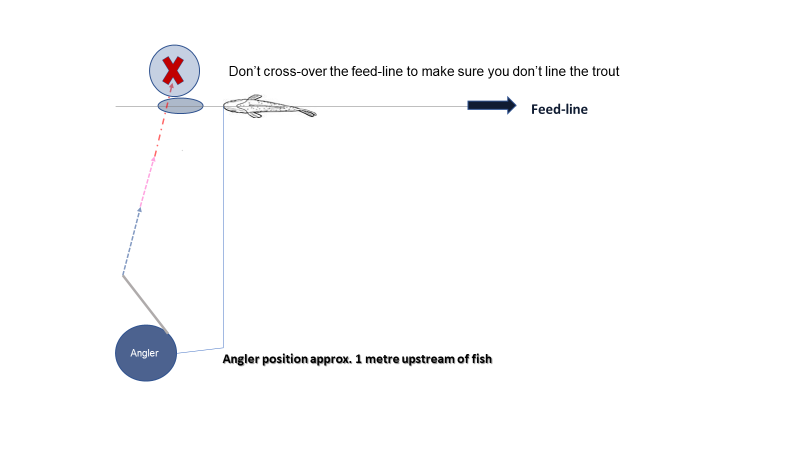
Tony E
7 Sept 2022
Care and some clear thinking will pay dividends.
MAKING THE FIRST PRESENTATION CAST
In the excitement of the moment too many anglers rush into casting and consequently blow an easy fish, when a little forethought could have paid dividends. Take your time and assess the situation.
Before getting set to cast, look around for where the best place to land your trout might be. Then identify any potential hazards that will need to be managed should you successfully hook the trout. This puts you ‘ahead of the game’ … before you even hook your fish.
Having settled on the choice of fly, visualise the drift and choose the best casting position to facilitate it, taking into account drag and the size of the trout’s window. While the drift line might often be directly over the trout, it isn’t always. Check to see if the trout tends to feed more in one direction, then present the fly to that side and adjust where you stand to achieve this.
Determine how far ahead of the fish, on the chosen drift line, you need to present the fly. This is the 'Target Zone'. For dry flies this will be on or just beyond the front edge of the trout’s window ...approximately the same as the feeding depth of the fish. Because nymphs need time to sink to the trout's feeding depth, they need to be cast much further ahead, depending upon the speed of the current. This will be at least 3 to 4 times the feeding depth, or longer when there is no chance of drag.
Where possible, look for a prominent rock underwater the chosen distance above the fish and focus on this feature (the Target Zone). Avoid looking directly at the fish while you are presenting the fly. The trout may be the focus of your desire, but to nail the cast in the right place the fish shouldn’t be your principle source of attention, otherwise ‘what you look at what you will hit!’
The first 'Presentation Cast' isn’t actually the very first cast. Drop the first cast a couple of metres directly short of the fish. Visually measure the remaining distance to the Target Zone and strip off only enough line to reach it. A pile of unused line around the feet when you're wade-fishing is poor ‘house-keeping’ and a source of unnecessary tangles.
When trout feed on the cushion in front of a rock, drag is usually a problem, so place the fly off to one side first, before working closer to the trout on subsequent casts. If there is unmanageable drag, consider the option of laying the leader directly over the rock.
Don’t false cast a long way out to the side of the trout as this puts the fly and leader directly into the trout’ s cone of vision and the final change of direction makes the chance of a truly accurate cast highly unlikely. Better to make two false casts low and directly in line with the target zone and then finish with a positive Presentation Cast. Bingo!
Making An Angled Presentation Cast
Making a Presentation Cast From Opposite a Trout






